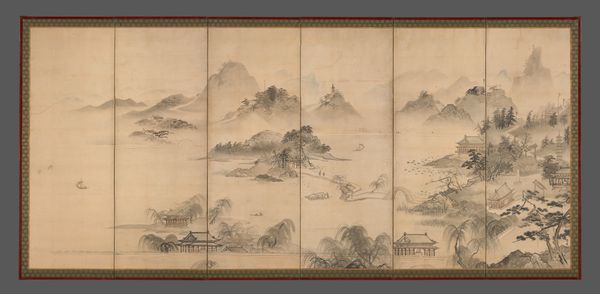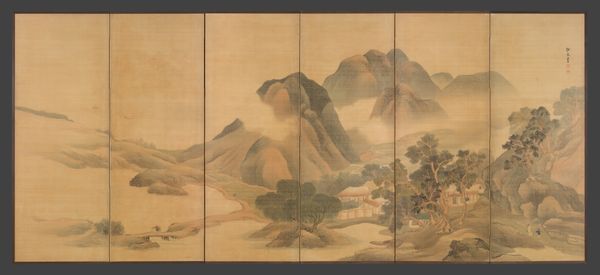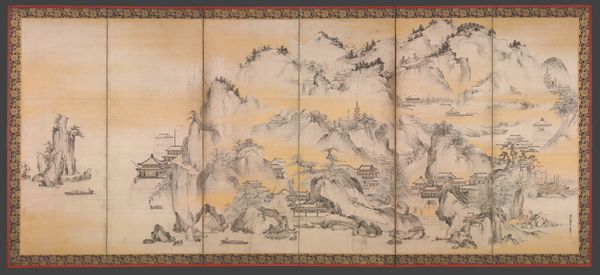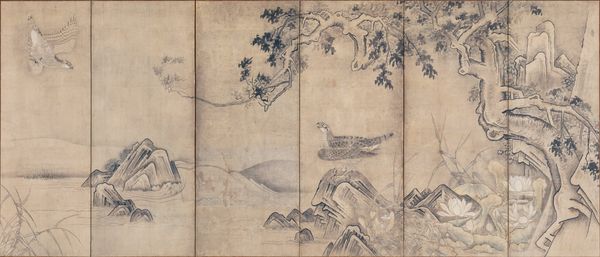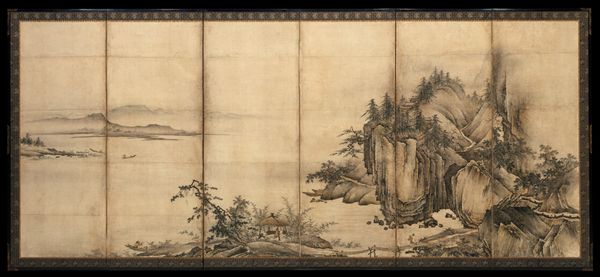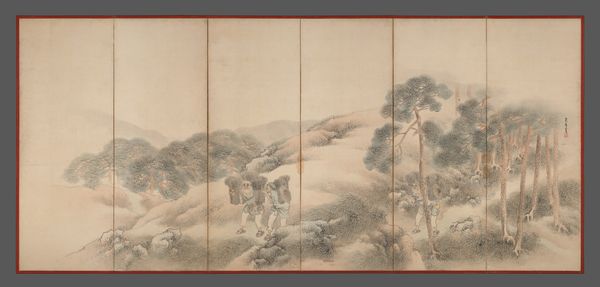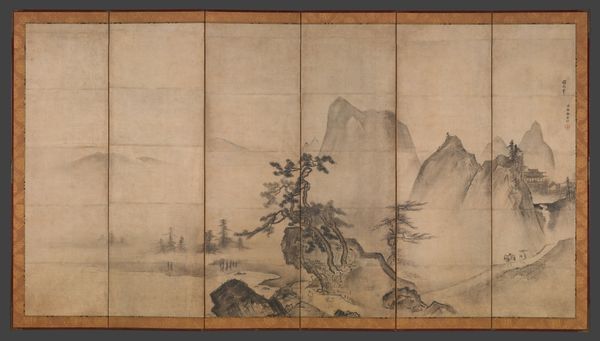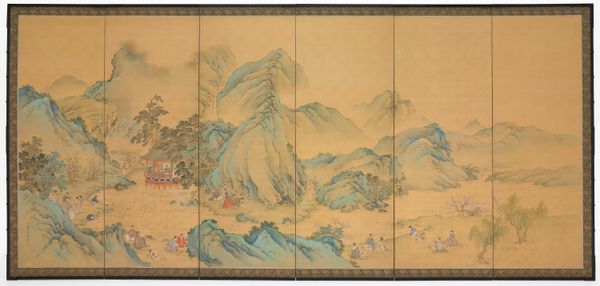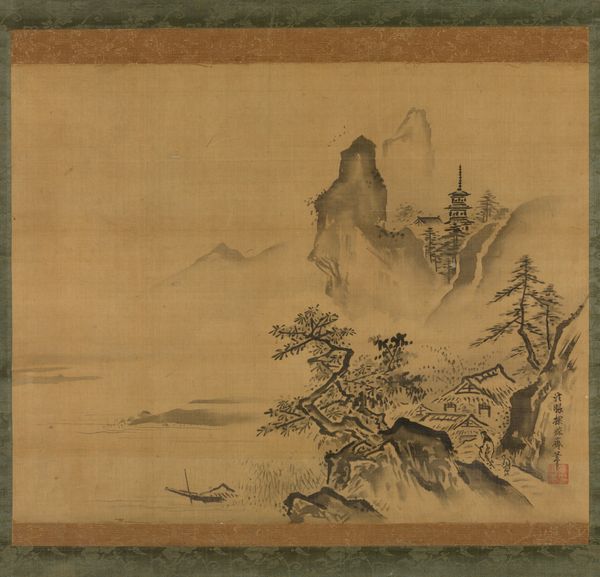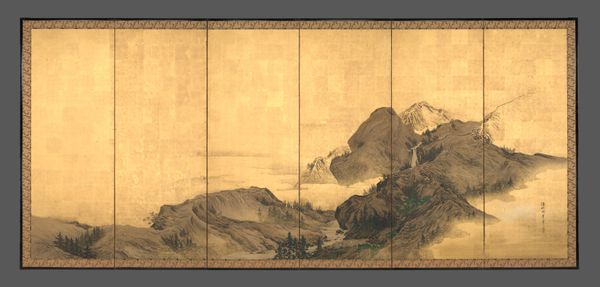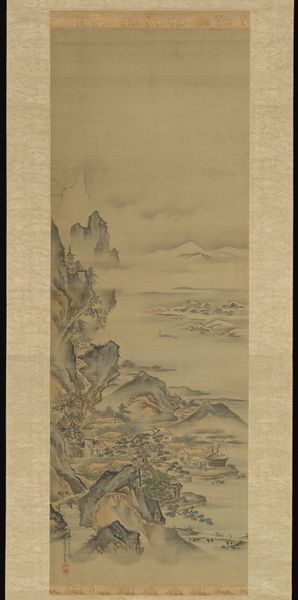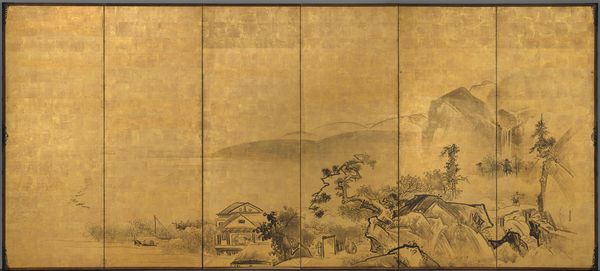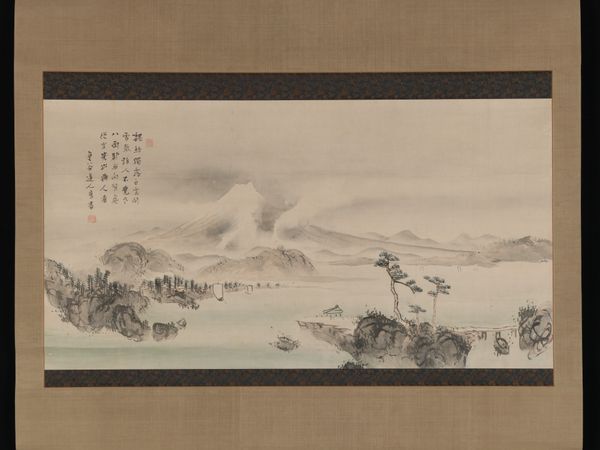
painting, paper, ink
#
medieval
#
painting
#
asian-art
#
landscape
#
house
#
paper
#
ink
#
orientalism
#
calligraphy
Dimensions: Image (each): 61 15/16 in. × 11 ft. 8 1/4 in. (157.3 × 356.2 cm) Overall with mounting: 68 15/16 in. × 12 ft. 3 7/8 in. (175.1 × 375.6 cm)
Copyright: Public Domain
Unkoku Tōgan created this ink-on-paper, six-panel screen, "Landscape of the Four Seasons," in Japan. It encapsulates Tōgan's vision of the natural world. Consider the social context in which Tōgan worked. He was associated with the Unkoku school, which itself was founded upon the work of the earlier master Sesshū Tōyō. But this wasn't just an artistic lineage; it was an institutional one. Tōgan styled himself as Sesshū's artistic heir, presenting his work as a continuation of a revered tradition. We see this reverence in the monochrome ink wash technique, known as *suibokuga*, which was embraced by Zen Buddhist monks and later adopted by artists seeking to emulate Chinese ideals. But Tōgan’s landscape isn't just a copy. It's an interpretation, reflecting the cultural values and aesthetic preferences of his time. The very act of creating and displaying such a screen was embedded in social rituals, often associated with the homes of powerful figures. Historians delve into the social and institutional histories of art, using resources like artist biographies, patronage records, and cultural histories, to reveal the complex interplay between art and society. We see art as more than aesthetic expression, but as a reflection of social and institutional contexts.
Comments
No comments
Be the first to comment and join the conversation on the ultimate creative platform.
